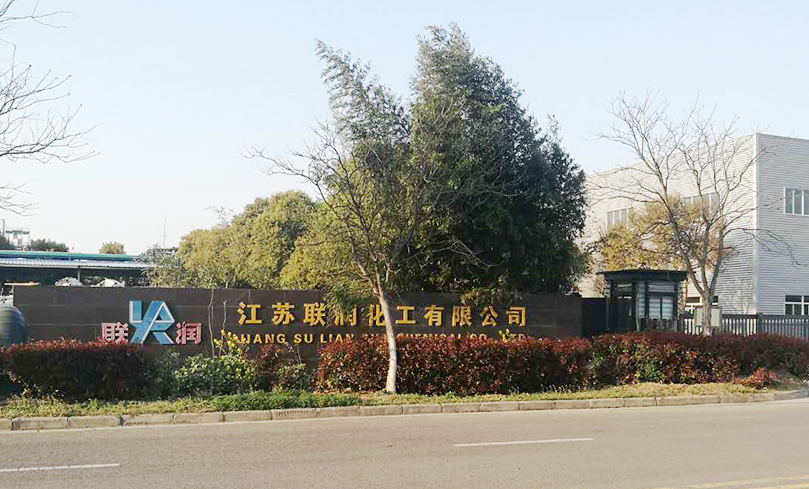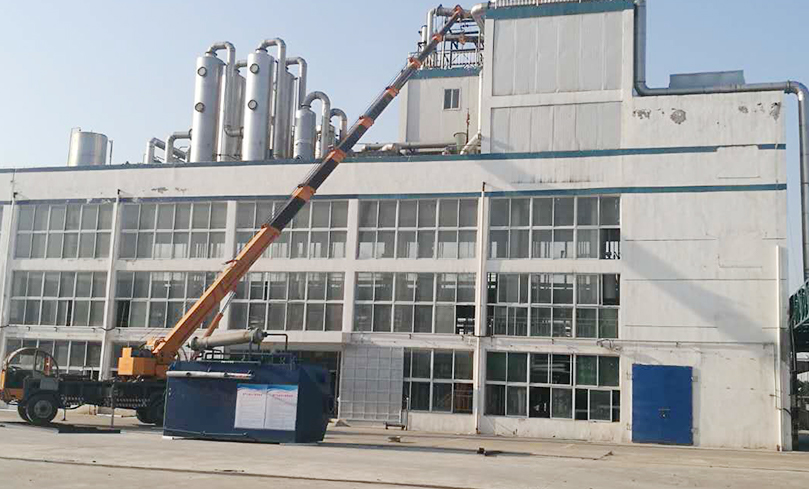

What are the characteristics of extractive distillation compared with azeotropic distillation?
① Extractant is easier to choose than entrainer.
(2) The extractant does not vaporize in the distillation process, and the energy consumption of extractive distillation is less than that of azeotropic distillation.
③ In the process of extractive distillation, the amount of extractant added varies greatly, and the suitable entraining dose in azeotropic distillation is mostly certain. Therefore, the extractive distillation operation is flexible and easy to control.
④ Batch operation is not suitable for extractive distillation, but batch operation can be used for azeotropic distillation.
⑤ The operating temperature of azeotropic distillation is lower than that of extractive distillation, so azeotropic distillation is suitable for separating heat-sensitive solutions.
Below, chemical raw material manufacturers introduce the practical applications of extractive distillation.
In the fields of chemistry and petrochemical industry, extractive distillation is mainly used in two aspects: one is the separation of hydrocarbons with similar boiling points, such as the most typical separation of butene and butadiene, the difference of boiling points between them is only 2℃, and the relative volatility is 1.03; The other is the separation of azeotropes, such as methanol-acetone, ethanol-ethyl acetate, and organic water solutions such as ethanol and acetic acid.
The advantage of extractive distillation is to increase the relative volatility of separated components, so that the separation of difficult-to-separate systems can be carried out; The disadvantage is that the added amount of extraction is large, which increases the energy consumption in the separation process. Therefore, improving extractive distillation is of great significance to strengthen the separation process.
① Aromatic hydrocarbon separation process
In aromatic hydrocarbon recovery, liquid-liquid extraction technology has been used for a long time. Liquid-liquid extraction technology affects the separation of components based on the polarity of components, but has little effect on boiling point. Because of the limitation of solvent selection, it is difficult to separate the mixture with wide boiling point by extractive distillation. Previously, it can only be used for narrow boiling point materials, such as the separation process of C6 and C7 materials with N- methylpyrrolidone or N- formylmorpholine as solvent.
However, with the development of extractive distillation technology, extractive distillation with mixed solvents has solved the above problems.
Compared with the traditional separation process of mixed aromatics, GT-BTX process has the advantages of low investment cost, less required equipment units, excellent solvent performance, low risk of product contamination, high product recovery rate, high purity, low energy consumption and great flexibility in operation. The purity of benzene and toluene reached 99.995% and 99.99%, respectively. The recovery rate of total aromatics is higher than 99.19%, the mass fraction of raffinate and extract in solvent is less than 10-6, and the energy consumption per kilogram of feed is 798kJ.

② Desulfurization of FCC gasoline
50% ~ 60% (mass fraction) of sulfides in FCC gasoline are thiophene and its alkyl derivatives, and the rest are mercaptan and other sulfides. Thiophene compounds have strong stability under catalytic cracking conditions, and hydrodesulfurization is widely used by foreign companies. In order to further reduce the sulfur content in gasoline, the current measure is to improve the hydrotreating capacity. Hydrogenation is beneficial to desulfurization of fuel, but it has some disadvantages, such as high operating cost, deep hydrogenation will reduce octane number of gasoline, etc.
According to the characteristics of sulfide in oil products, catalytic oxidation, complexation, catalytic adsorption, biological method, solvent extraction and alkaline washing are widely used to remove sulfide from oil products. Among these methods, extractive distillation technology has its own advantages. When FCC gasoline is treated, this technology adopts a solvent that can change the relative volatility of non-aromatic hydrocarbon components (containing olefins) and thiophene compounds in the feed. While extracting thiophene compounds, it also extracts other aromatic hydrocarbon sulfides (due to the strong polarity of these compounds), while the components without olefins enter the hydrogenation system for treatment. The extractive distillation and alkali washing method are adopted, which has the characteristics of no octane number loss, low hydrogenation load, capability of treating cracking materials with a wide range of sulfur content and great operation flexibility.
By adding extractive distillation before hydrogenation, the problems existing in traditional process were solved. Thiophene sulfide in aromatic hydrocarbon was extracted by highly selective solvent, which reduced the olefin content in raffinate. The raffinate with low sulfur and high olefin content could be directly mixed with gasoline containing 10×10-6 thiophene sulfur. However, the high content of mercaptan can be treated in the feed or raffinate by the traditional alkaline washing method, so that the total sulfur content can be easily reduced to (5 ~ 110) × 10-6, without reducing octane number.
③ pyrolysis gasoline recovery and styrene purification
There are abundant petrochemical compounds in pyrolysis gasoline by-products, which will produce considerable economic benefits if purified and fully utilized. Because these components have close boiling points and form complexes, it is difficult to separate them by traditional separation methods. The development of extractive distillation technology makes it possible. Extractive distillation technology is usually used to purify butadiene and isoprene from light components of cracked gasoline, and in fact it can also be used to effectively separate styrene from C8 feedstock.
There is a hydrogenation process step in the traditional cracking process. On the one hand, there is coking problem in this step, and at the same time, a large amount of hydrogen source is needed for the reaction. Recent studies have shown that styrene is one of the causes of coking, and reducing styrene content is a better way to solve coking.
The extractive distillation technology with mixed solvent can realize the extraction of styrene at a lower cost. Therefore, on the one hand, the application of extractive distillation technology can transform styrene from fuel products to petrochemical products, and its value is improved. In addition, hydrogen consumption in hydrotreating is reduced and coking problem is solved.